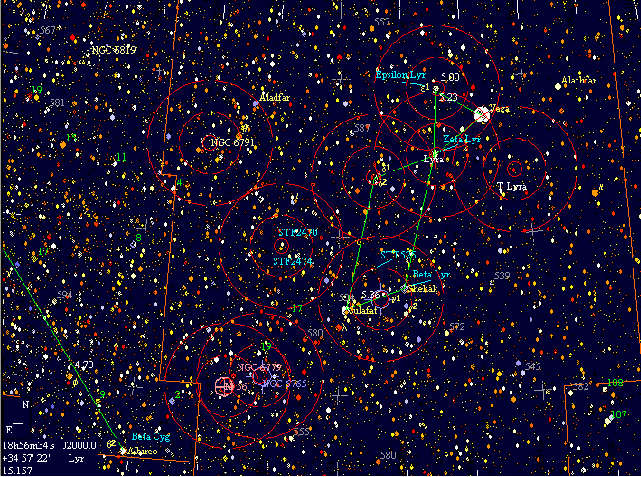


Well worth a look with any size telescope Lyra’s deep sky object are many and varied.
With double stars such as Epsilon 1 and Epsilon 2 (The double-double), Struve 2470 and Struve 2747 (The double-double’s double), Delta 1 and Delta 2, Otto Struve 525, Beta Lyra, and Zeta Lyra listed in the AL’s 100 doubles, binary star searchers have a lot to look at.
Deep sky observers with medium aperture scopes have two Messier objects to study. The Ring Nebula (M 57), a planetary nebula looking a lot like a celestial smoke ring, and the Globular Cluster (M 56), a sometimes overlooked object that resolves very nicely in most scopes.
Those of you with larger aperture scopes will find the Planetary Nebula NGC 6765, a nice challenge. The Open Cluster NGC 6791 lists out as a rich cluster of faint stars covering 16’ of this part of the night sky.
Now everyone with any size scope should find there way over to T Lyra arguably the reddest star in the sky!
For more information regarding Lyra or any of the 88 constellations in the night sky, I suggest: the two volume set “The Night Sky Observer’s Guide” by George Robert Kepple and Glen W. Sanner.